THE Caatinga is an exclusively Brazilian biome, occupying approximately an area of 734,478 km2, which corresponds to about 70% of the Northeast region and 11% of the national territory. The name “Caatinga” has Tupi-Guarani origin and means “white forest”. This name represents the characteristics of the vegetation of this ecosystem, whose leaves fall into the drought period.
Read too:What are the main biomes in the world?
Caatinga Characteristics
The Caatinga has several particularities, especially in relation to the climate adaptation of plants and animals. This biome is affected by extreme droughts and dry periods, characteristic of the semiarid climate. For this reason, the vegetation had to develop survival mechanisms due to the limited availability of water. The fauna is quite diverse and is also marked by adaptations to the climate, such as recurrent migrations in dry periods.
→ Location
Caatinga is located in the Northeast region of Brazil and comprises the states of Paraíba, Rio Grande do Norte, Piauí, Maranhão, Alagoas, Pernambuco, Sergipe and Bahia. It also occurs in some parts of the Southeast Region that are north of the state of Minas Gerais.
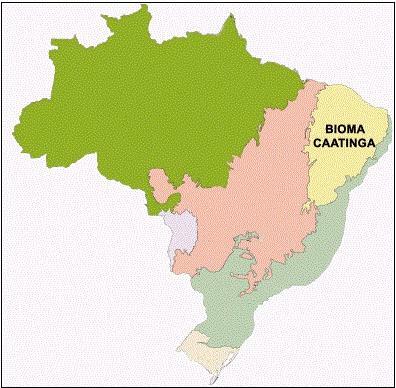
Caatinga is located mainly in the Northeast region, covering nine states.
→ Climate
The climate that comprises the Caatinga region is the semi-arid tropical. This climate is marked by long periods of drought, that is, without rain. The rainfall index is below 800 mm/year. Temperatures are generally high, with an average of 27 °C, and may reach higher numbers, above 32 °C. During the rainy season, rainfall rates can reach 1000 mm/year. In the drier periods, there is a low, reaching 200 mm/year.
know more: Climate and vegetation of the Northeast region
→ Vegetation
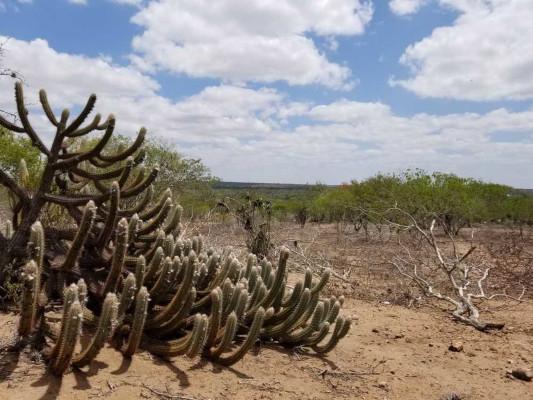
Some species of the Caatinga vegetation lose their leaves during the dry season.
The vegetation of the Caatinga presents characteristics of adaptation to the long period of drought and a great diversity of plant species, many of them endemic (they only develop in this region). The vegetation of the Caatinga has three strata:
arboreal: with species ranging between 8 and 12 meters in height;
shrubby: with species ranging between 2 and 5 meters in height;
herbaceous: with species below 2 meters in height.
The main characteristics of the vegetation are short trees, crooked trunks and that present thorns and leaves that fall during the dry season (with the exception of some species, such as juazeiro). O fall from the leaves it is a mechanism to prevent excessive water loss and also to reduce the occurrence of photosynthetic processes so that plants enter the energy-saving stage. Another striking feature is that the roots The plants cover the ground so that water can be stored during the rainy season.
Some species of cacti, such as the mandacaru, have a peculiar characteristic: their leaves are modified into thorns to prevent the plant from losing water through the process of transpiration. Thorns are also a defense mechanism of these plants in order to prevent animals from feeding on them.
It is also worth mentioning that cacti, which make up the plant formation of this biome, have a large water storage capacity. There are also plants that have a kind of wax on their leaves to also prevent water loss.
Another striking feature of the plant species found in the Caatinga is the ability of some plants to perform photosynthesis and produce nutrients even if they do not have leaves. This is due to the fact that these species have a green stem with cells made up of chlorophyll, which is the pigment responsible for capturing light and ensuring that organisms are able to produce their food through photosynthesis.
The following vegetation species stand out in the Caatinga:
bromeliads |
Xique Xique |
mandacaru |
bitch |
acacia |
juazeiro |
macambira |
maniçoba |
umbu |
mimosa |
Do not stop now... There's more after the advertising ;)
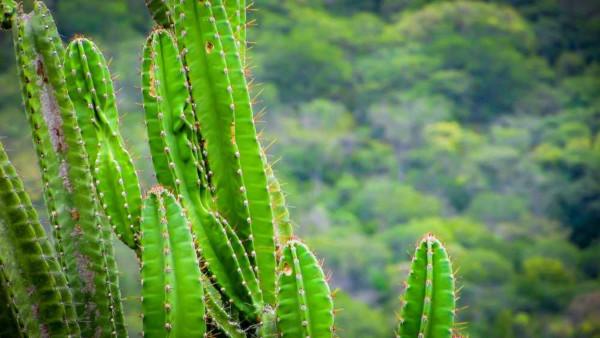
Mandacaru is a species of cactus from the Caatinga flora
The flora of the Caatinga is very diverse. The flowering period varies according to the region, rainfall regime and soil quality. According to Embrapa, the Caatinga has around 1,981 species of plants. Cacti, such as mandacaru and xique-xique, stand out; bromeliads, such as macambira; and legumes, such as catingueira.
Mind Map: Caatinga
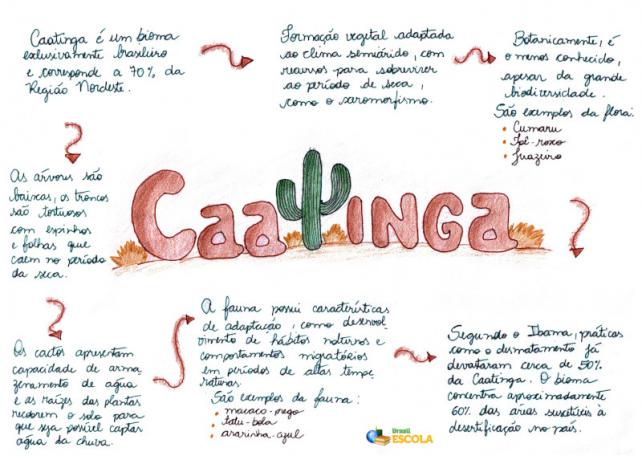
*To download the mind map, Click here!
→ Characteristics of some species of the caatinga flora
Cumaru: plant species adapted to most soils, especially sandy and deep soils. It has stems that loosen fine chips, revealing the younger layer, which has a green color. This species is at risk of becoming extinct due to extensive exploitation.
Purple IPE: species of plant whose name represents the color of its flowers. During its flowering, the plant loses its leaves, the flowers being highlighted, which form dense bouquets. Because of the great demand for this species for ornamentation, given its exuberance, it is threatened with extinction.
Juazeiro: species of plant whose leaves remain green during the dry season because they have roots that capture moisture in the subsoil. It is one of the few species that do not lose their leaves during the dry season. It can reach up to 16 meters.
Macambira: species of bromeliad that develops under exposure to the sun. It has succulent leaves, which are used to feed cattle and also to produce flour and mush. Its stalk is widely used to cover roofs.
→ Fauna
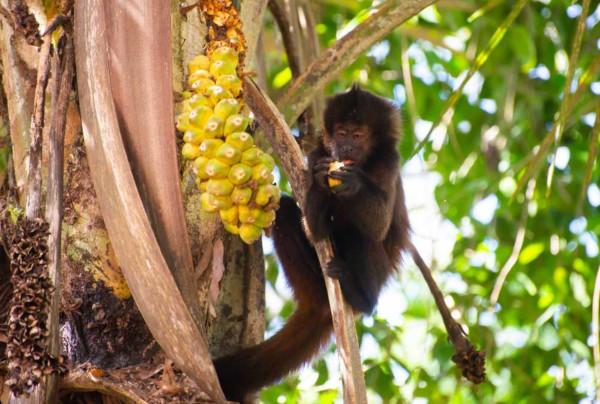
The capuchin monkey is an example of a species in the Caatinga fauna.
The fauna of the Caatinga is quite diverse, but not as well known, with several species of endemic animals. The animals that are in the region covered by this biome have characteristics of adaptation to the climate, as well as plants, such as the development of nocturnal habits, migratory behaviors and "hibernations" (capacity of some species to deal with climatic conditions hostile).
According to the Ministry of the Environment, the Caatinga presents:
178 species of mammals;
591 species of birds;
117 species of reptiles;
79 species of amphibians;
241 species of fish;
221 species of bees.
Of the animals found in this biome, the following stand out:
Spix's Macaw |
cururu frog |
Puma |
capuchin monkey |
White wing |
agouti |
armadillo ball |
north-eastern marmoset |
guinea pig |
armadillo |
brocket deer |
northeast marmoset |
caatinga outriggers |
yellow-breasted alligator |
→ Ground

The soil of the Caatinga has clayey and sandy textures, making it difficult for rainwater to infiltrate.
O ground Caatinga is defined, according to the Brazilian System of Soil Classification, as shallow to deep. It is rich in ores, but poor in organic matter, due to the characteristics of the climate, the hydrography and the vegetation of the region. Textures are sandy and clayey.
The most common in this biome is the shallow and stony soil, which makes it difficult to store water. Colors vary between reddish and gray tones. Even with these characteristics, this soil is still used for raising animals. As the main agricultural products grown in the Caatinga, we can mention licuri, umbu, cashew and passion fruit.
Read too:How does soil leach occur?
→ What are the “types of caatinga”?
Talking about “types of caatinga” is not appropriate. The correct term is phytophysiognomies. The physiognomies of the Caatinga are:
arboreal caatinga: composed of forests with trees that can reach up to 20 meters in height.
shrubby caatinga: composed of low trees up to 8 meters high, such as the xique-xique and the macambira.
dry forest: composed of forests located near slopes and mountain tops. The leaves remain mostly in the dry season.
Executioner: composed of shrubs with thin and crooked stems. This phytophysiognomy is typical of the western region of Chapada do Ibiapaba, located between the states of Piauí. and from Ceará, and from the south of Chapada do Araripe, located on the border of the states of Ceará, Piauí and Pernambuco.
→ Hydrography

The São Francisco River is one of the few perennial rivers present in the Caatinga.
The hydrography of the region comprised by the Caatinga biome presents rivers that are, in their majority, intermittent or temporary, that is, rivers that run only during the rainy season and that dry up during the dry season. The perennial river (which has running water throughout the year) is the best known of this biome. River San Francisco. The rivers of the Caatinga generally originate on the slopes of the mountains.
Examples of rivers in the Caatinga are:
Rio Poti
Jaguaribe River
Parnaíba River
Caatinga Devastation
The Caatinga is considered one of the 37 regions of the planet that must be conserved, as it contributes to the maintenance of local and global climatic characteristics, in addition to presenting great biodiversity. Its preservation is fundamental, mainly because this biome is the cradle of several springs that supply the northeastern hinterland.
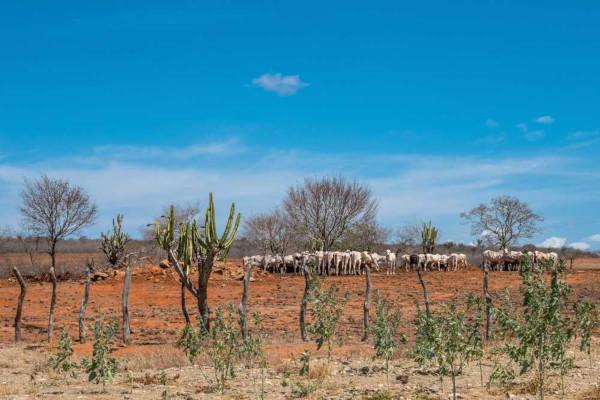
The Caatinga biome is one of the most devastated in Brazil, with its area destined for agricultural activities, which increase deforestation.
The semiarid region covered by this biome is the most populated in the world, being a habitat for about 28 million people, who draw from the biome the resources necessary for their survival. In addition to this intense exploitation of natural resources, there is an increase in the expansion of agricultural frontier to make agricultural and livestock production viable, thus causing an increase in deforestation. According to Ibama, until 2008, deforestation in the Caatinga reached 45%. Data from MapBiomas (Brazil's Biomes Monitoring System) indicate that the Caatinga lost approximately 11 million hectares between 2000 and 2016.
Read too: Deforestation in the Caatinga
by Rafaela Sousa
Graduated in Geography

